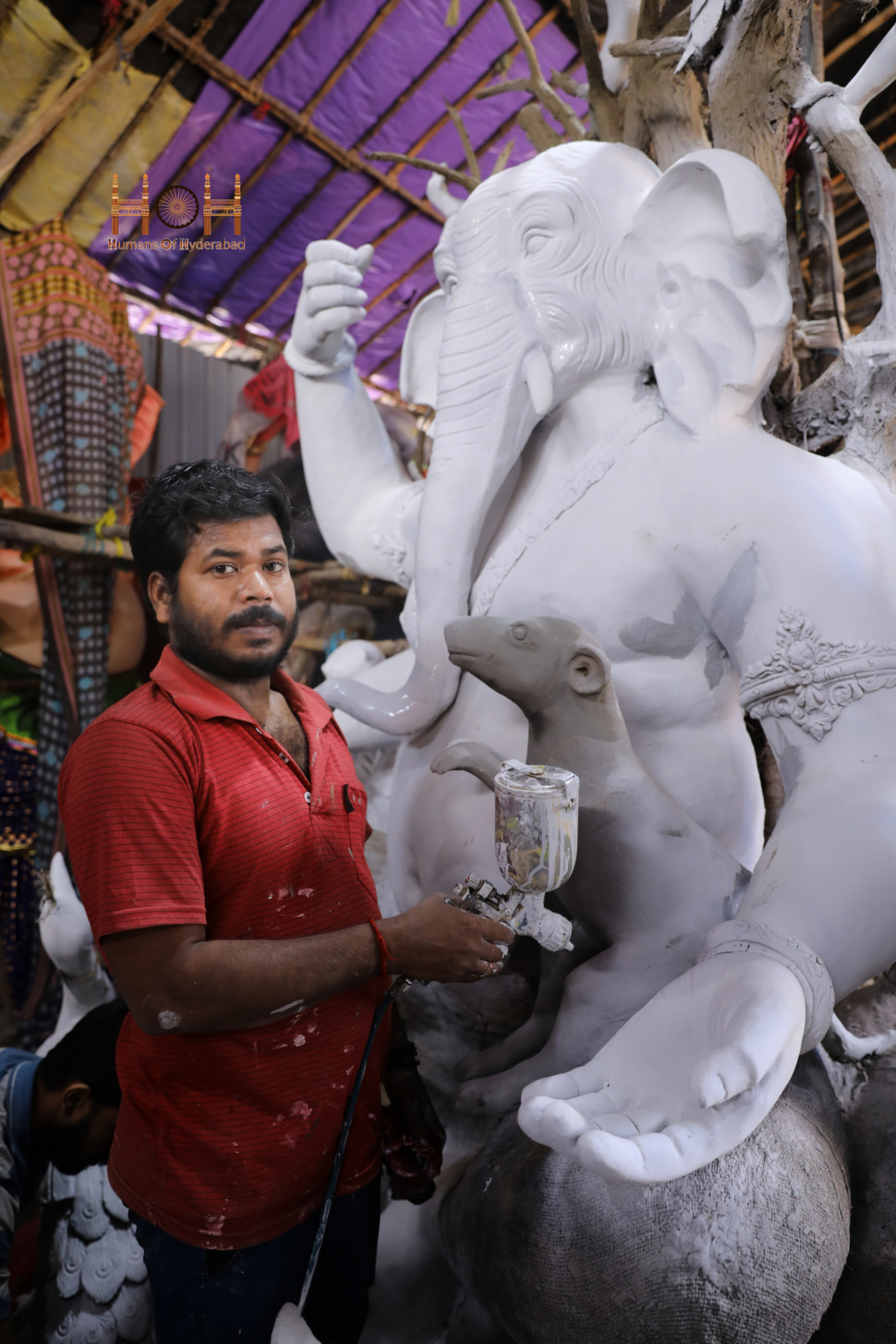“I’m Binoy, from West Bengal. Every year, I travel to Hyderabad during Ganesh Chaturthi to make clay Ganeshas. In Barkatpura, we set up temporary sheds and spend almost two months here shaping idols with mud, bamboo, hay, and colours.
The idol begins with clay that we bring from the Hooghly riverbed in Kolkata, which we call Kolkata mitti. It is soft when wet, strong when dry, and our families have worked with it for generations. To shape the idol, we first build a frame using bamboo sticks and dried paddy straw. The clay is then layered on top, slowly giving form to Ganesha. Once the body is ready, we apply a white coating. Many people think this is Plaster of Paris, but it isn’t. It’s a chalk-based primer that prepares the surface so the colours set well.
This season, the rains made our work slow and tricky. Clay takes longer to dry in such weather, and we had to be extra careful while handling the idols. But with patience, we managed, and now the idols are ready.
After that comes the painting. We use water-based colours—bright reds, yellows, blues, and greens to bring out Ganesha’s form. The last step is always the eyes, painted carefully by hand with the thinnest brush. That is the moment we say the idol comes alive.
For us, this work is not only a livelihood but also a tradition we are keeping alive. These clay Ganeshas dissolve back into the soil after immersion, unlike plaster ones that harm water bodies. When someone takes home a clay idol we made, I feel we have done our part—for faith, for tradition, and for nature.”
:
